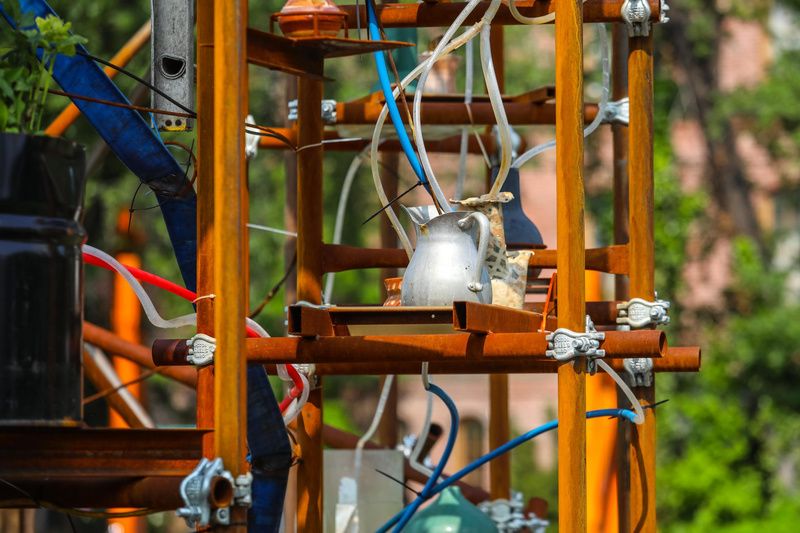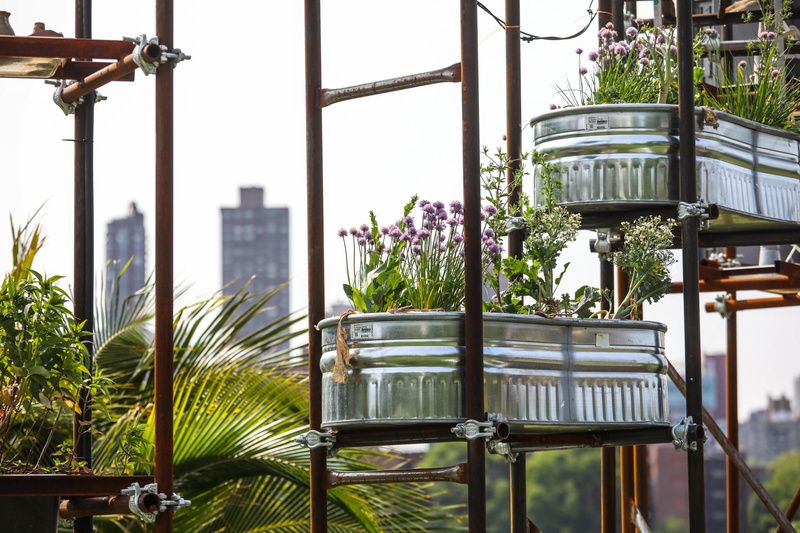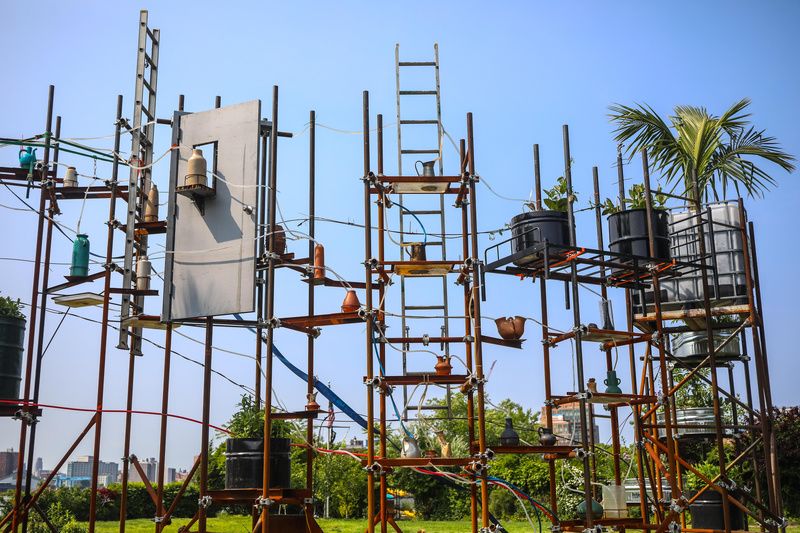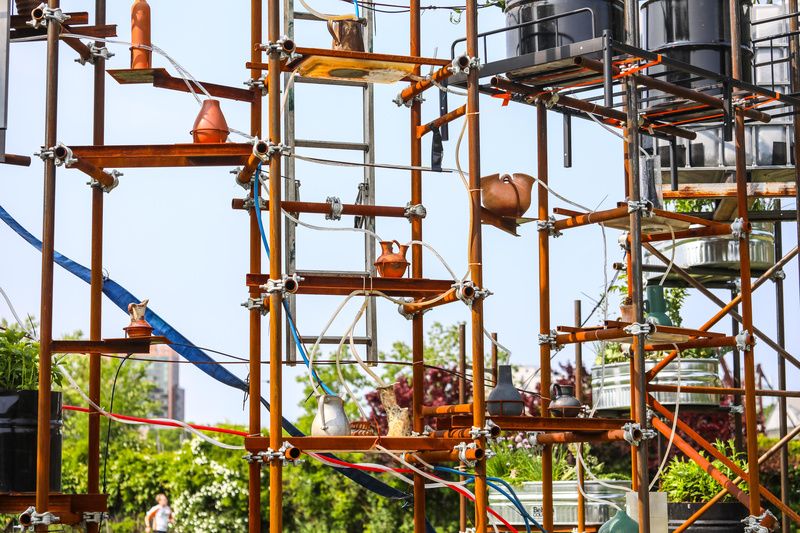An Original Stone Eagle Comes Home to Penn Station in NYC
A 7,500-pound eagle sculpture from the top of the original 1910 Penn Station building has been returned after years in hiding!


While the climate crisis remains an emergency, artist Mary Mattingly (b. 1978) took her fear and transformed it into an informative art installation at Socrates Sculpture Park in Queens. Like Swale, a food garden that Mattingly built on a reclaimed barge, Ebb of a Spring Tide centers on her concern for the local ecosystem of New York City. By drawing water from the East River, the sculpture demonstrates how we are intrinsically linked to New York City’s natural environment.

Ebb of a Spring Tide’s main feature is the Water Clock, a 65-foot scaffold-like sculpture built to mimic the Manhattan skyline and constructed with materials commonly used in industrial agriculture. It is located at the edge of Socrates Sculpture on the waterfront in Western Queens, an area threatened by the climate crisis. The sculpture includes tubes that feed water from an East River estuary to the clock, demonstrating our connection and dependency on coastal and riparian (riverside) ecosystems. As the clock balances the water it receives from the river, it ebbs and flows like a natural tide. When the sculpture overflows, “the clock reminds me that survival is bound to the survival of one another and the earth” says the artist. The survival of humans and the existence of riparian ecosystems are intrinsically connected, as suggested through the use of the veins carrying the water that pulses through the sculpture, much like a beating heart.
As the climate changes, the sea will slowly engulf coastal cities like New York City. The slow rise of sea levels will reach a point between 8 and 15 inches, which poses a threat to the coastal ecosystems. These environments are–as Mary Mattingly demonstrates through her art–essential to human life and intertwined with all natural systems. To combat some of the fear surrounding rising sea levels and the decline of the riparian ecosystem, Mattingly has planted 35 different species of plants, like lavender and aloe vera, on the structure and around the installation. Each plant featured is salt-tolerant, meaning that, in the contamination of land with salted sea water, these plants would continue to grow and flourish. A salt-resistant garden allows our ecosystem and environment to continue to thrive while the briny sea infiltrates the land more and more.



Powered by her concern for our natural Earth, Mattingly has created a “self-sufficient living [system] that challenges notions of home and community” as stated in the press release by the sculpture park. The community will be able to use Flock House, another part of Mattingly’s installation, as a living, a garden, or even a community gathering space. The tent-like structure is adaptable to both rural and urban environments. In 2012, Mary Mattingly wanted to create spaces that combine with the existing landscape–whether that be natural or man-made. She began to create a series of mobile, self-sufficient enclosures and acknowledged the benefits of these shelters as the probability of drastic weather events increases. Within these small spheres of privacy, community members can find safe places after catastrophic weather events, like hurricanes, that might displace them. Making the domes available to everyone and scattering them throughout the city as envisioned would be a small step towards environmental justice in the face of inequity.

Mary Mattingly will host members of the neighboring communities in photography and plant workshops held at the bubble-like structure throughout the summer. All workshops will lead up to an event on August 5 called Lotic Time where various projects will be unveiled. The community engagement in the project cements the overall theme of the connection and duty we have to each other and our earth.
The takeaway of Mattingly’s installation is the importance of not only our coastal and riparian environments but the importance of community structures. Like the tubes in the Water Clock, taking care of our environment is like blood flowing in the veins of a communal life force.
Next, check out The Top 10 Secrets of Socrates Sculpture Park in Queens, NYC
Subscribe to our newsletter